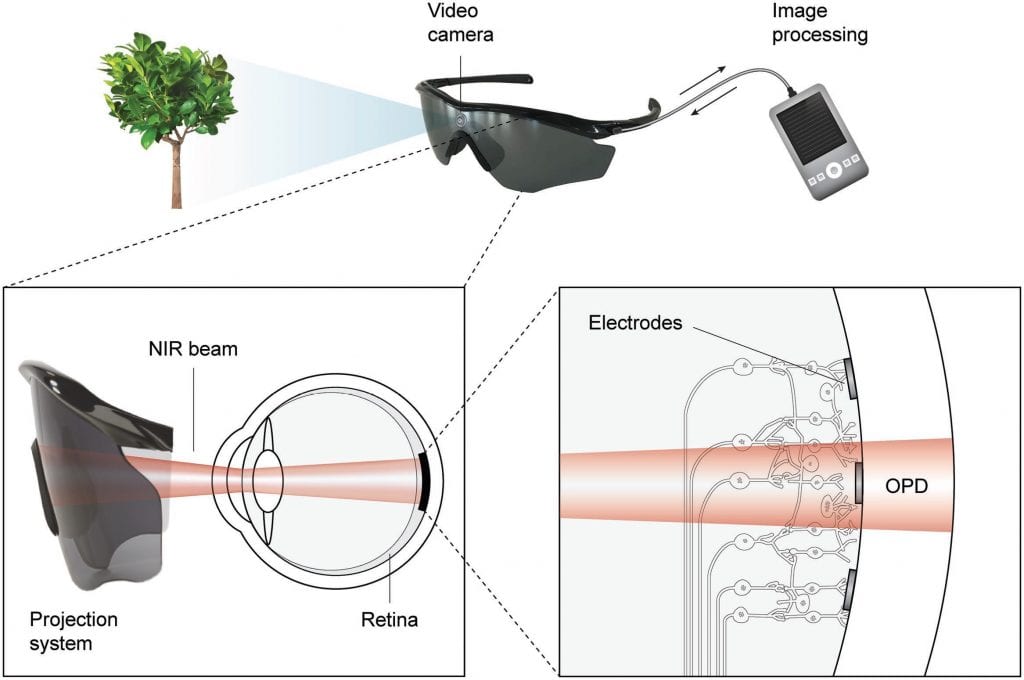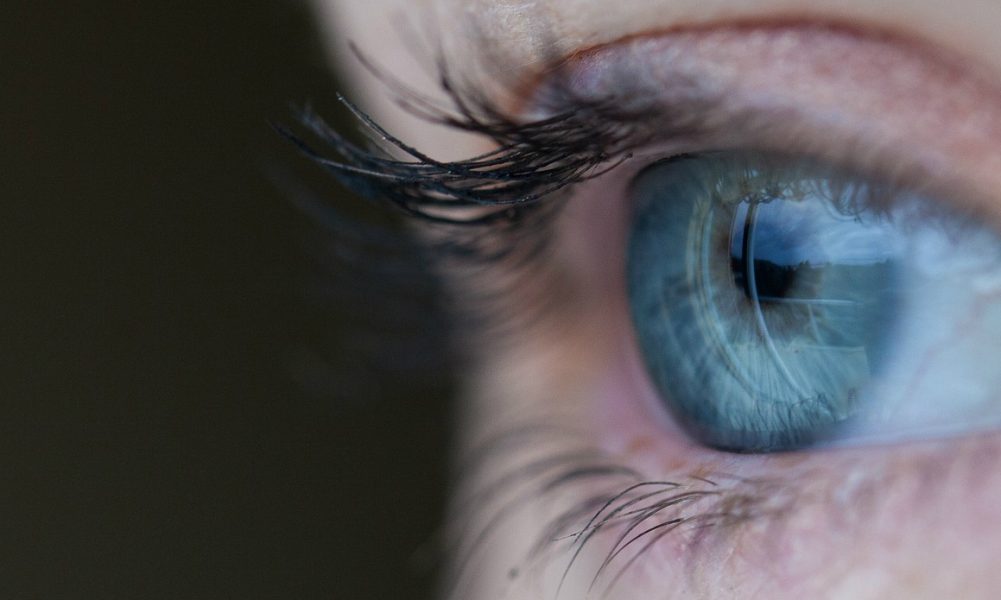Millions of people around the world suffer from retinal degenerative diseases such as retinitis pigmentosa and age-related macular degeneration. In these conditions the photoreceptor cells progressively degenerate, leading to varying degrees of vision loss.
Over the years, electronic retinal prostheses have shown great potential to restore sight by electrical stimulation of the remaining retinal neurons that receive and organize visual information.
Photovoltaic retinal prostheses, first proposed in 2012, were comprised of pixels that function independently to convert pulsed light into pulsed electric current which triggers neural activity. As the photovoltaic implant is thin and wireless, the surgical procedure is quite simple compared to the conventional subretinal surgery that involves extraocular power supplies.
 In this system, the patient wears video goggles containing a camera processed by a portable computer and projected onto the retina. Each photovoltaic pixel converts near-infrared (NIR) light into pulses of electric current, which is then delivered and propagated to nerve cells through stimulating microelectrodes and the retinal network.
In this system, the patient wears video goggles containing a camera processed by a portable computer and projected onto the retina. Each photovoltaic pixel converts near-infrared (NIR) light into pulses of electric current, which is then delivered and propagated to nerve cells through stimulating microelectrodes and the retinal network.
Recent advances on the flexible electronics undoubtedly invigorate this field. The group of Prof. René Janssen from Eindhoven University of Technology have designed a flexible platform based on solution-processed single-junction and tandem organic photodiodes(OPDs) integrated with sputtered titanium nitride(TiN) stimulating and return electrodes.
Combining the experimental results, they also simulated the performance of OPDs pixels coupled with the microelectrode in a physiological saline environment upon pulsed NIR illumination.
By comparing the single-junction and tandem OPDs in their studies, it proves that both pixels are able to deliver the required charge to simulate neurons under pulsed NIR light, while only the latter with small electrode size (~35µm) can cover the entire charge per pulse neural stimulation window due to their higher open-circuit voltage (Voc~1.4V).
This study opens the way toward future high-resolution retinal prostheses that still involves multiple engineering and biological challenges.

















